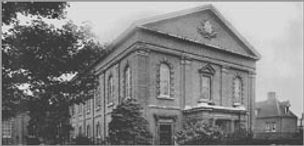
A BRIEF HISTORY
During Cromwell’s Commonwealth (1649 to 1660) many people became interested in a freer, simpler form of worship and independent congregations began to appear. John Bunyan was one of those people.
However with the restoration of the monarchy and the return of King Charles the Second to the throne in 1660 this all came to an end. Charles was keen to re establish his authority and make it clear that the situation created by Henry the Eighth (and reinforced by his daughter Elizabeth the First), that the king or queen was head of the church and the state, still held.
To do this he passed the Act of Uniformity in 1662 which prescribed the form of public prayers, administration of sacraments, and other rites of the Established Church of England, according to the rites and ceremonies prescribed in the Book of Common Prayer.
Adherence to the Act was required in order to hold any office in government or the church, although the 1662 edition of the Book of Common Prayer (prescribed by the Act) was so new that most people had never even seen a copy. It also explicitly required episcopal ordination for all ministers, i.e. deacons, priests and bishops: necessary because the Puritans had abolished many features of the Church during the Civil War.



As an immediate result of this Act, over 2,000 clergymen refused to take the oath and were expelled from the Church of England in what became known as the Great Ejection of 1662. Although there had already been ministers outside the established church, this created the concept of non-conformity, with a substantial section of English society excluded from public affairs for a century and a half.
It was committing the crime of preaching without a state-sanctioned licence and refusing to acknowledge the role of the state and the Crown in controlling worship which resulted in John Bunyan being imprisoned for 12 years.
Eventually these rules were relaxed and ‘non conformist’ or ‘dissenting’ churches were permitted, although those attending these churches were forbidden from many areas of public life. There was a large growth in these churches in the industrialised urban areas of the 19th century especially amongst the newly created middle classes. They typically took a more scientific and liberal stance to many of their Anglican counterparts and became involved in many of the major social struggles of the 19th & 20th century.
Kier Hardie for instance, who founded the Labour Party in 1900 was a keen member of the Evangelical Union Church (now the United Reformed Church and Congregational Church) in Hamilton, Glasgow.
In England and Wales in the late 19th century the new terms "free churchman" and "Free Church" started to replace "dissenter" or Non Conformist.


